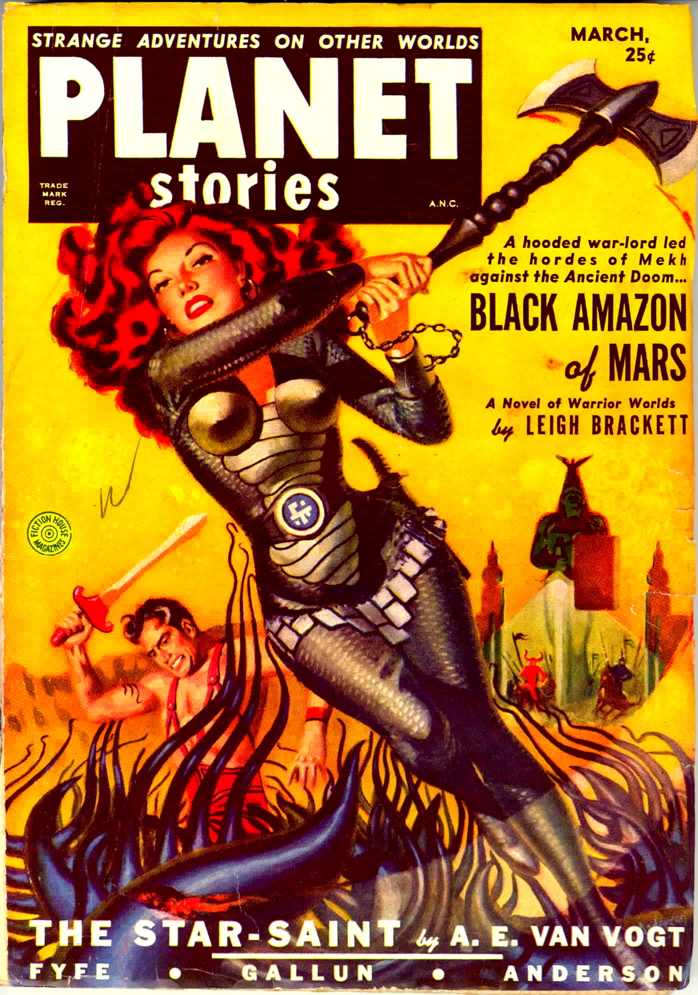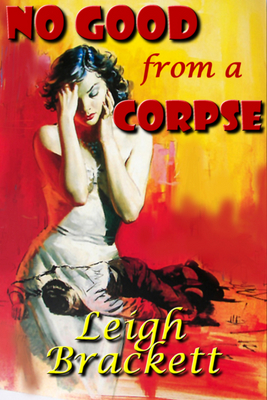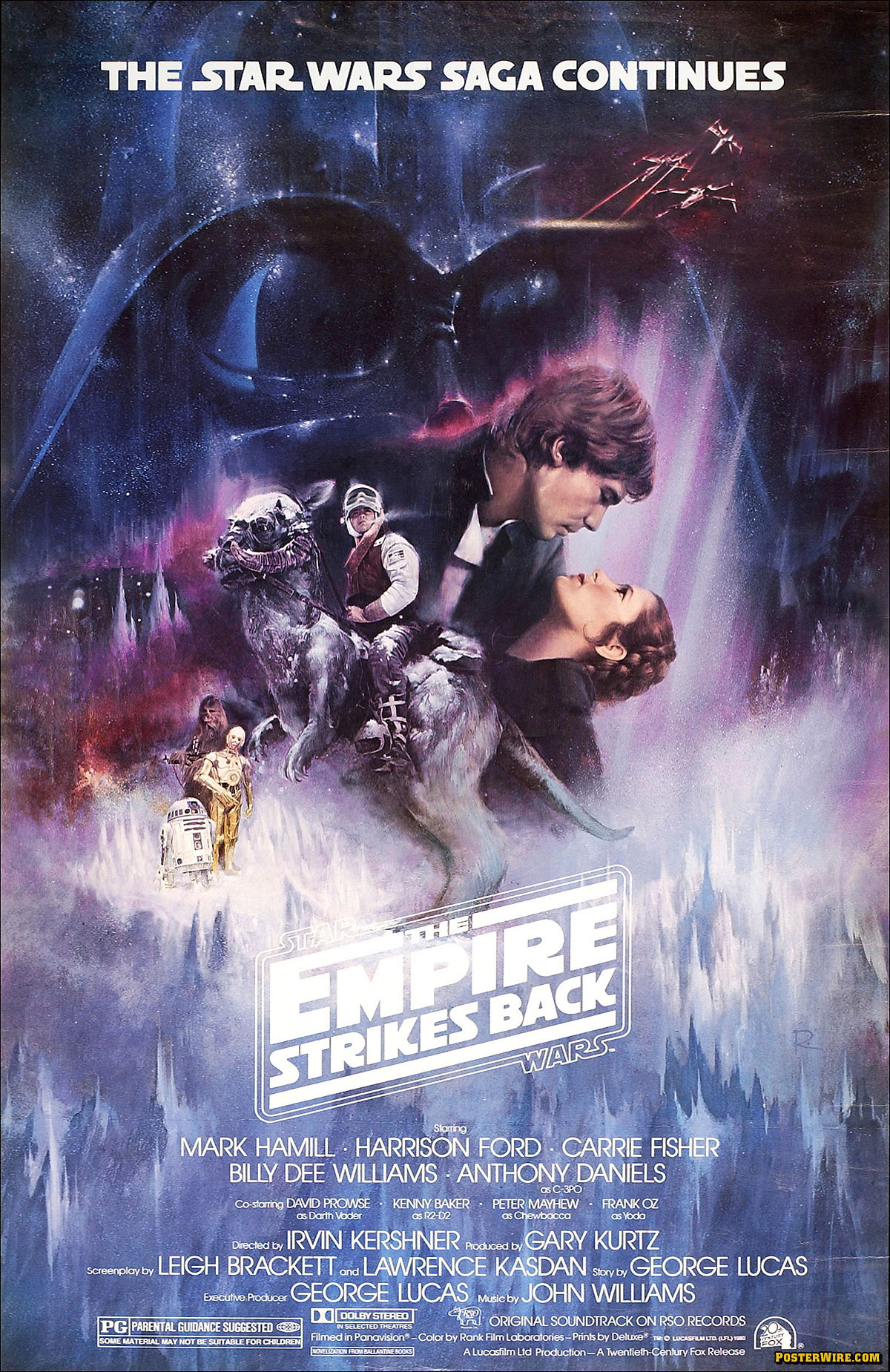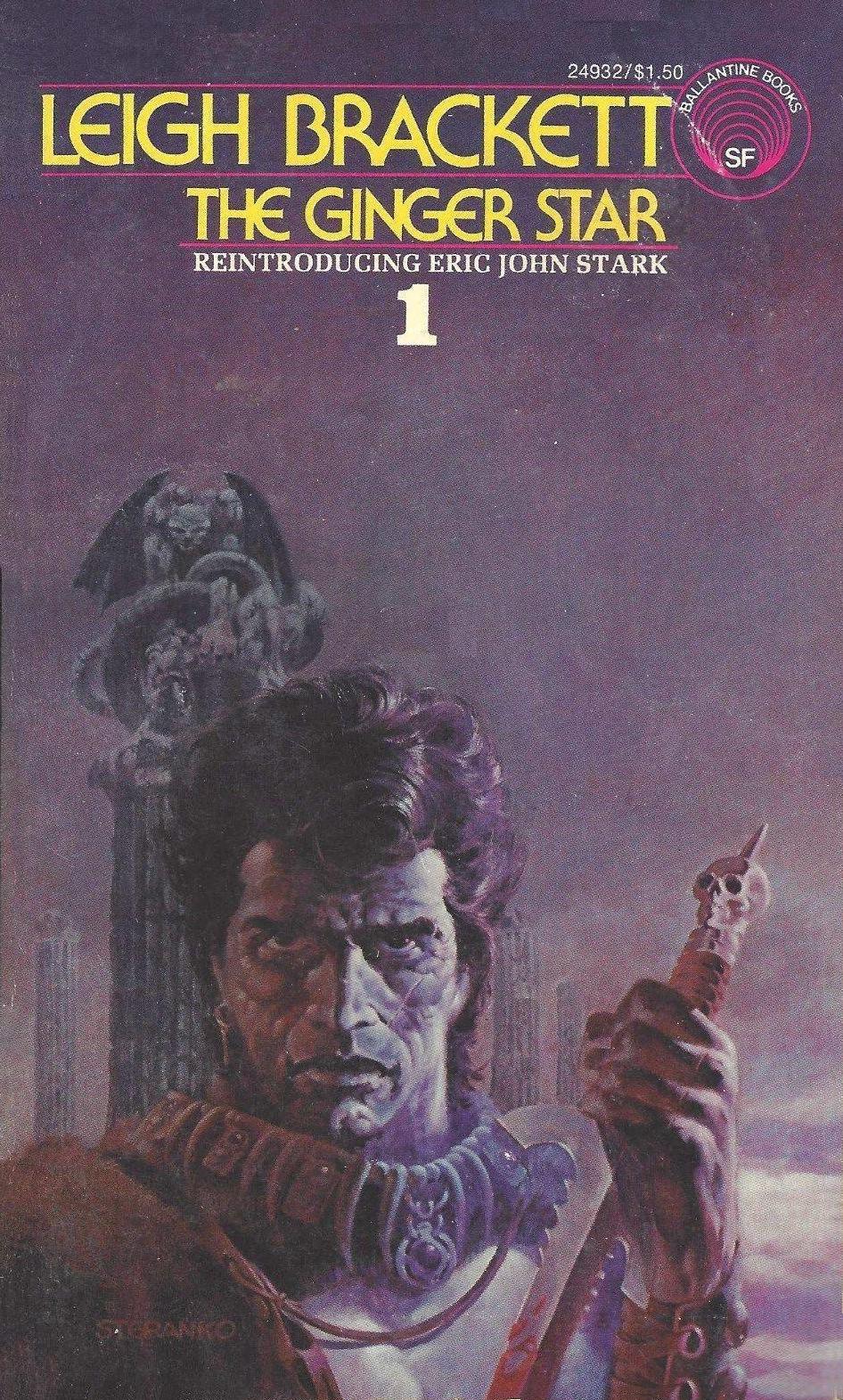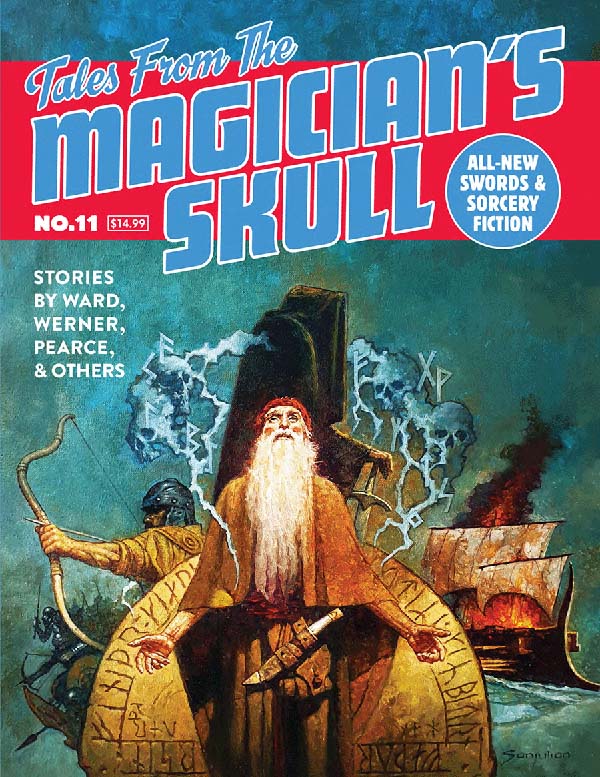
Our Appendix N Archeology and Adventures in Fiction series are meant to take a look at the writers and creators behind the genre(s) that helped to forge not only our favorite hobby but our lives. We invite you to explore the entirety of the series on our Adventures In Fiction home page.
Adventures in Fiction: Leigh Brackett
by Michael Curtis
The sad truth is that Appendix N is overwhelmingly a boys’ club. Much of the blame can be assigned to the fact that science-fiction and fantasy writers prior to 1960s were by and large white men. It was a tough club for a woman to break into, resulting in many female authors with an interest in writing science-fiction and fantasy working under either pen names (such as Andre Norton) or their initials (like C.L. Moore). A few managed to find success and publication without obscuring their femininity, proving that gender is meaningless when it comes to writing rollicking good sci-fi and fantasy. Leigh Brackett was one of these women who earned her place in the club without needing to hide her identity.
The future “Queen of the Space Opera” was born on December 7th, 1915 in Los Angeles, CA. By her mid-twenties, Brackett had her first science-fiction stories published in John W. Campbell’s magazine, Astounding Science Fiction. She would bang out a number of science fiction stories for both Astounding Science Fiction and Planet Stories magazines, often exploring social issues against a backdrop of interstellar adventures.
In 1944, Bracket ventured outside the boundaries of sci-fi into the realm of the crime novel when she wrote the Raymond Chandler-inspired book No Good from a Corpse. Her experience writing hard-boiled crime spilled over into her science fiction work, and her later stories in that genre featured rougher, more noir-inspired characterizations.
Chiefly among these rougher heroes was Brackett’s most famous protagonist, Eric John Stark. Stark appeared for the first time in the short story “Queen of the Martian Catacombs,” later expanded into the full novel The Secret of Sinharat. Stark is a Burroughsian character: his parents were miners on Mercury when they were murdered by a violent tribe of aliens. The orphaned boy was discovered and raised by a friendlier tribe, learning the savage ways of primitive Mercury until he was found by a fellow Earthling and returned to civilization. Eric John Stark then embarks upon a career of adventure that takes him first across the solar system and then to other reaches of the galaxy. Brackett wrote three novellas and five novels with Stark as the protagonist.
Brackett continued to pen stories set not in the far reaches of the cosmos, but rather more closer to home. Stories other than the Stark tales were set on Mars and Venus, and were of the planetary romance genre of science fiction. Her depictions of Mars and Venus were similar to that of Edgar Rice Burroughs: worlds capable of supporting human life and home to alien tribesmen and fallen empires. Unlike Burroughs, these worlds weren’t isolated planets visited only by a few select and extraordinary individuals, but part of a vast intra solar system commercial network. This literary backdrop was referred to by her peers as the Leigh Brackett Solar System, and earned her the title of “Queen of the Space Opera” from contemporary science fiction writers.
The success of her crime novel No Good from a Corpse caught the eye of legendary Hollywood director and producer Howard Hawks, who was looking for someone to help William Faulkner adapt Raymond Chandler’s novel The Big Sleep into a screenplay. Hawks, mistaking the identity of No Good from a Corpse’s author, instructed his secretary to get “this guy Brackett” on the phone and see if he was available for the job. “He” was, and the success of The Big Sleep opened a new career door for Brackett. She wrote or co-wrote eleven screenplays during her lifetime, including those of the classic John Wayne films Rio Bravo, El Dorado, and Hatari!, the neo-noir classic, The Long Goodbye, and The Empire Strikes Back. In the case of the last film, George Lucas specifically sought out Brackett to pen the sequel to his galactic hit, Star Wars. Brackett, who had retired from writing and was battling cancer at the time, nevertheless took the job. Although there is some debate over how events played out and what portion of Brackett’s original work made it into the final draft, she retained her screenwriting credit on the film, at the very least as an honor from Lucas for her contributions to the field of science fiction.
Brackett never saw the final version of her last screenwriting project on the silver screen. She succumbed to cancer on March 18th, 1978.
While most of Brackett’s stories are entertaining and well worth the read, gamers are especially likely to enjoy the Eric John Stark tales. The original novellas and the books that developed out of them—“Queen of the Martian Catacombs” and The Secret of Sinharat, “Black Amazon of Mars” and The People of the Talisman, and “Enchantress of Venus”—are wonderful examples of the planetary romance. For my money, Eric John Stark is a sword-and-planet and science fiction hero equal to John Carter of Mars, Northwest Smith, or Han Solo. Judges thinking about running adventures set on the Purple Planet are especially encouraged to track down these stories, most of which have been collected in anthology format, and delve into them for inspiration.
Readers looking for stories that run a little more fantastical (although there’s no lack of that in the early Stark stories) are directed to the Skaith novels. Brackett wrote this trilogy of books—The Ginger Star, The Hounds of Skaith, and The Reavers of Skaith—from 1974 to 1976, and they take Stark out of the Terran solar system to the distant planet of Skaith. There, Stark must search for an old friend while contending with planet-wide warfare, strange religious sects, psionic dog-like aliens, and more.
One final note of interest regarding Brackett’s description of Eric John Stark must be addressed before we close this overview on her work. Stark is described as having dark, almost black skin, supposedly a result of being raised on Mercury with its close proximity to the Sun. For the time that Brackett was writing these stories, the 1940s and 1950s, a heroic, articulate, and attractive protagonist with dark skin was unheard of in contemporary literature, even of the science-fiction variety. Although Brackett had explored social issues in some of her previous work, Stark is perhaps her most pointed challenge to social and racial issues at the time. However, Stark is often overlooked in the catalog of progressive literary characters from that period, largely due to the fact that illustrations never portrayed him as anything but a white, often blonde, man whenever he appeared on magazine and book covers. It wouldn’t be until the 21st century when Paizo Publishing reissued the Planet Stories line of fiction that Stark would finally be depicted as Brackett always intended.
Leigh Brackett left a solid body of work behind for gamers to enjoy as literature or to inspire us in our roleplaying recreation. Let us all take a moment to honor her memory today and to give thanks for the legacy the “Queen” provided.


